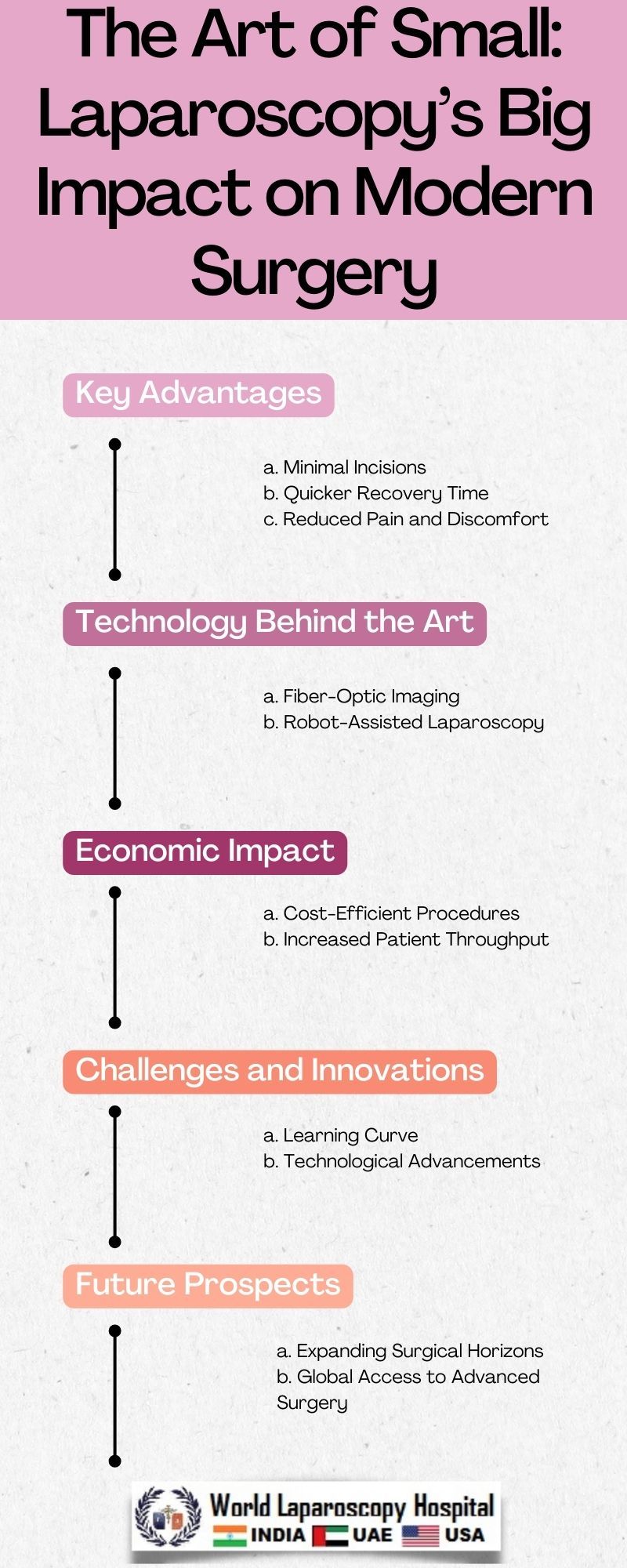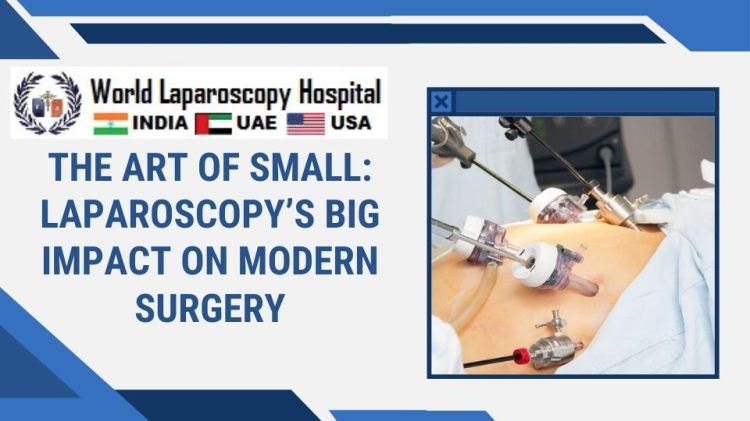The Art of Small: Laparoscopy’s Big Impact on Modern Surgery
Introduction:
In the vast realm of medical innovation, the art of surgery has undergone a transformative journey with the advent of laparoscopy. This groundbreaking technique has significantly reshaped the landscape of modern surgery, offering a myriad of advantages over traditional open procedures. As we delve into the intricacies of laparoscopy, we unravel the artistry behind the small incisions that wield a profound impact on patient outcomes, recovery times, and the overall evolution of surgical practices.

The Genesis of Laparoscopy: A Historical Perspective
To truly appreciate the impact of laparoscopy, we must first travel back in time to understand its inception. The roots of this minimally invasive technique can be traced to the mid-20th century when medical pioneers envisioned a less invasive approach to surgical interventions. The journey from the first laparoscopic procedures to the sophisticated techniques employed today reflects not only technological advancements but also a paradigm shift in surgical philosophy.
The Artistry of Small Incisions: Precision Redefined
Central to laparoscopy's success is the artistry of small incisions. Traditional open surgeries often necessitate large cuts, causing substantial trauma to surrounding tissues. In contrast, laparoscopic procedures rely on tiny incisions, each serving as a portal for specialized instruments and a miniature camera. These incisions, often no more than a few centimeters in length, reduce blood loss, minimize scarring, and accelerate healing.
Navigating the Microcosm: The Role of Miniature Cameras
At the heart of laparoscopy lies the marvel of miniature cameras. These sophisticated optical devices, inserted through one of the small incisions, provide surgeons with a real-time, magnified view of the surgical site. The ability to navigate the internal landscape with precision enhances the surgeon's dexterity, allowing for meticulous exploration and manipulation. The visual clarity afforded by these cameras elevates laparoscopy to an art form where precision is paramount.
Specialized Instruments: Sculpting with Finesse
The art of laparoscopy extends beyond visualization to the instruments employed. Specialized tools designed for minimal invasiveness allow surgeons to perform intricate procedures with finesse. From laparoscopic graspers to dissectors, each instrument is a testament to precision engineering. The reduced trauma associated with these tools translates into less postoperative pain, quicker recovery, and, importantly, lower infection rates.
Patient-Centric Benefits: Redefining Recovery and Scarring
The impact of laparoscopy extends far beyond the operating room, profoundly influencing the patient experience. Smaller incisions result in less pain, reduced risk of infection, and shorter hospital stays. Moreover, the cosmetic aspect cannot be overlooked. The minimal scarring associated with laparoscopic procedures not only contributes to a more aesthetically pleasing outcome but also reflects a fundamental shift in prioritizing patient well-being throughout the surgical journey.
Expanding Horizons: The Diverse Applications of Laparoscopy
Initially confined to a limited range of procedures, laparoscopy has transcended its origins and now encompasses a broad spectrum of surgeries. From gynecological and urological interventions to gastrointestinal and thoracic procedures, the versatility of laparoscopy continues to grow. As technology advances, the boundaries of what can be achieved through small incisions and miniature cameras are continually expanding, ushering in a new era of surgical possibilities.
Challenges and Innovations: Navigating the Evolution of Laparoscopy
While laparoscopy has undeniably revolutionized surgery, it is not without its challenges. The learning curve for surgeons transitioning from traditional techniques to laparoscopy is one such hurdle. However, ongoing innovations, including virtual reality simulations and robotic-assisted systems, aim to bridge this gap and make laparoscopic skills more accessible. The ongoing evolution of laparoscopy reflects a commitment to overcoming challenges and ensuring its benefits reach a broader spectrum of patients.
The Economic Footprint: Cost-Effectiveness and Healthcare Sustainability
Beyond its clinical merits, laparoscopy contributes to the economic landscape of healthcare. Shorter hospital stays, reduced postoperative complications, and quicker recovery times translate into cost savings for healthcare systems. The economic benefits of laparoscopy align with the broader push for sustainable and efficient healthcare practices, reinforcing its status as a transformative force in the surgical arena.
The Future Canvas: Emerging Technologies and Beyond
As we celebrate the one-year anniversary of this article, it is imperative to gaze into the future of laparoscopy. Emerging technologies, such as artificial intelligence integration and enhanced imaging modalities, hold the promise of further refining the precision and capabilities of laparoscopic procedures. The evolving landscape of surgery is marked by a continuous quest for innovation, ensuring that the art of small continues to make significant strides.
Conclusion:
In the grand tapestry of medical history, laparoscopy emerges as a masterpiece, a testament to the fusion of art and science in the field of surgery. The art of small incisions, miniature cameras, and specialized instruments collectively form a symphony of innovation that resonates in every laparoscopic procedure. As we reflect on the past, embrace the present, and anticipate the future, the impact of laparoscopy on modern surgery stands as an enduring testament to human ingenuity and the relentless pursuit of excellence in healthcare.
